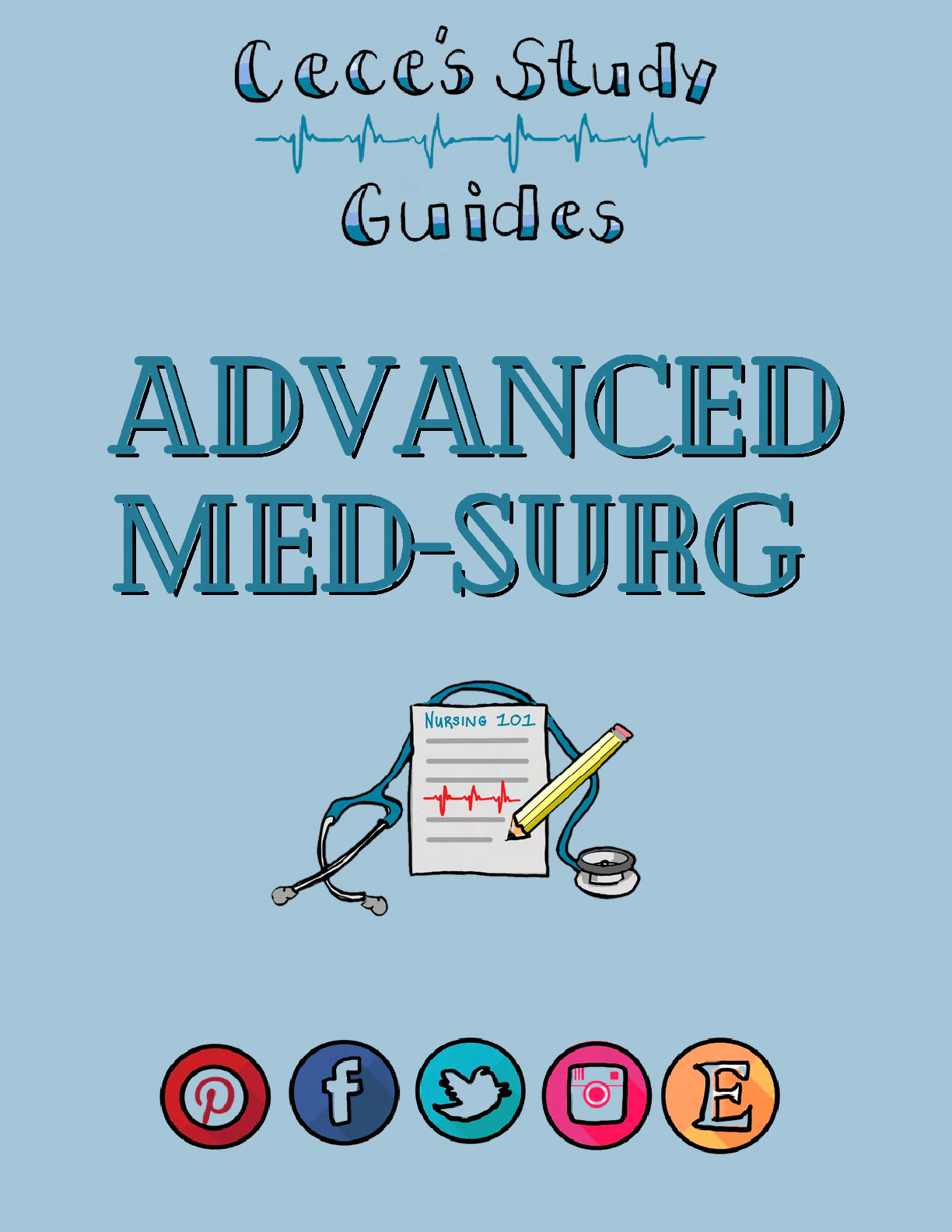*NURSING > STUDY GUIDE > Foundations for Population Health in Community Public Health Nursing 5th Edition (All)
Foundations for Population Health in Community Public Health Nursing 5th Edition
Document Content and Description Below
1. Which of the following best describes community-based nursing? a. A practice in which care is provided for individuals and families 2. Which of the following best describes community-oriented nur... sing? d. Having the goal of health promotion and disease prevention 3. Which of the following is the primary focus of public health nursing? d. Health care of communities and populations 4. Which of the following is responsible for the dramatic increase in life expectancy during the 20th century? c. Sanitation and other population-based prevention programs 5. A nurse is developing a plan to decrease the number of premature deaths in the community. Which of the following interventions would most likely be implemented by the nurse? b. Promote healthy lifestyle behavior choices among the community members. 6. Which of the following is a basic assumption of public health efforts? c. The health of individuals cannot be separated from the health of the community. 7. Which of the following actions would most likely be performed by a public health nurse? d. Working with community groups to create policies to improve the environment 8. Which of the following public health nurses most clearly fulfills the responsibilities of this role? b. The nurse who spent the day attending meetings of various health agencies 9. Which of the following best defines aggregate? c. A collection of people who share one or more characteristics 10. A registered nurse was just employed as a public health nurse. Which question would be the most relevant for the nurse to ask? a. “Which groups are at the greatest risk for problems?” 11. Making sure that essential community-oriented health services are available defines which of the core public health functions? c. Assurance 12. When talking to a women’s group at the senior citizens’ center, the nurse reminded them that the only way the center would be able to afford to provide transportation services for them would be for them to continue to write letters to their local city council representatives requesting funding for such a service. What was the nurse trying to accomplish through this action? d. Help the women engage in political action. 13. The public health nurse has a clear vision of what needs to be done and where to begin to improve the health of the community. Why would the nurse spend time meeting with community groups to discuss the most important task to be addressed first? d. To work with the groups, not for the groups 14. The nurse often has to make resource allocation decisions. Which of the following best describes the criterion the nurse should use in such cases? d. The needs of the aggregate rather than a few individuals 15. Which of the following actions best represents public health nursing? a. Assessing the effectiveness of the high school health clinic 16. Two nurses plan to walk under a huge downtown bridge where various homeless persons live. Why would the nurses go to such an unsafe area? a. To assess the needs of the homeless who live there 1.A: Migrant workers and their families who reside in a specific mobile home park during the summer months would best be classified as a: a. Community. 2.A: The nurse in community health defines goals and measurable objectives during the planning phase of a community health intervention. This also marks the beginning of the: a. evaluation phase. 3.A: A nurse has invited community members to participate as full partners in creating changes to improve the health of the community. Which of the following may be an unexpected consequence of this action? a.A change in the distribution or redistribution of power and influence 4.A: A nurse just accepted a position in community health and has been assigned to a neighborhood very close to where she lives. Which of the following best describes the rationale for this assignment? a.To allow participant observation by the nurse 5.A: The nurse in community health identifies an elder abuse problem because of caregiver stress among families in the local community resulting from lack of caregiver support services. The next step in the community-oriented nursing process would be to: a. analyze the community problem. 6.B: While conducting a community health assessment, a nurse in community health meets with local religious leaders to understand the values, norms, perceived needs, and influence structures within the community. This process of data collection can best be described as: b. data generation. 7.A B: A community health nurse is beginning to work with a newly assigned community. Which of the following would be appropriate actions for the nurse to take to help ensure acceptance? (Select all that apply.) a.Asking those with whom the nurse interacts in the course of daily living their perception of the community (e.g., clerks in grocery stores or pharmacies) b.Attending community events such as festivals or fairs and interacting with participants 8.B: Which of the following objectives is most appropriate for the development of a community-oriented nursing care plan? b.Of mothers receiving nutrition counseling, 80% will identify five sources of calcium by the end of class. 9.B: A nurse is working toward an objective to "Increase to at least 90% the proportion of all pregnant women who receive first trimester prenatal care." During which of the following phases of the nursing process would determination of the objective occur? b.Planning phase 10.B: A nurse is assessing a community's openness to change. Which of the following variables indicate that the community is ready? B. High social-economic status in the community as a whole 11.B: A nurse in community health is invited to work with a coalition of churches to address safety concerns for children in the local community. The nurse provides training in problem-solving skills, manages conflict, facilitates the process, and provides expertise in interpreting data. This nurse has chosen the implementation role of: b. change partner. 1. Which of the following best describes the steps in program management? a. Assess, plan, implement, evaluate b. Identify, initiate, implement c. Organize, operationalize, mobilize, subsidize d. Substantiate, negotiate, evaluate ANS: A The program management process is similar to the nursing process. Program management consists of assessing, planning, implementing, and evaluating a program. DIF: Cognitive Level: Remember (Knowledge) REF: pp. 276-277 2. Which of the following best describes the ultimate goal of program planning? a. Avoid unanticipated conflicts in the program development phase b. Provide adequate funding to meet the program’s resource requirements c. Ensure that health care services are acceptable, equal, effective, and efficient d. Prevent unnecessary duplication of services Although the other options are aspects of program planning, they address only limited concerns. The comprehensive goal of program planning is to ensure that health care services are acceptable, equal, efficient, and effective. DIF: Cognitive Level: Understand (Comprehension) REF: p. 277 3. Which of the following best describes the purpose of strategic planning? a. To anticipate client needs now and in the future b. To match client needs, provider strengths, and agency resources c. To maximize effective use of agency resources d. To utilize provider strengths and competencies Strategic planning involves matching client needs, provider strengths and competencies, and agency resources. Everyone involved can anticipate what will be needed to implement the program, what will occur during implementation, and what the outcomes will be. DIF: Cognitive Level: Understand (Comprehension) REF: p. 277 4. Which would be an appropriate descriptor that meets all criteria for defining a client to be served by a program? a. All women ages 40 to 50 who have not had a menstrual period for 3 consecutive months b. Immigrants residing in Central County for less than 5 years who have difficulty understanding care instructions because of limited English proficiency c. Pregnant women who have received nutritional counseling but whose nutritional status did not improve d. Children ages 18 months to 5 years old who have been treated for nutritional deficiencies at the Central County Clinic The client should be defined by biological and psychosocial characteristics, by geographical location, and by the problems to be addressed. For example, in a community with a large number of preschool children who require immunizations to enter school, the client population may be described as all children between 4 and 6 years of age residing in Central County who have not had up-to-date immunizations. This example tells the reader who the client is, what the need is, how large the population is, and where they are located. 5. After completing a needs assessment, the nurse is confident that he has identified the highest priority health programming need within the community. He presents his ideas at a community interest meeting, and the attendees show essentially no interest in being involved. Knowing that the health problem must be addressed he proceeds with implementation as planned. Which of the following is the most likely outcome of the program? a. Community members will become increasingly positive about the new program. b. Others will recognize the importance of the program and become involved. c. The public health agency will both publicize and expand the program. d. The program will fail because of the community’s lack of interest. 16. A committee of health care professionals would like to establish a countywide program to improve Hispanic immigrant access to culturally competent health care services. Which of the following persons would be most helpful as a key informant? a. Hospital administrator b. Hispanic community leader c. National expert on cultural competency d. Politician or county official Key informants are leaders in the community who are knowledgeable about community needs. In this scenario, the Hispanic leader most likely knows more about the needs of the Hispanic community than the others listed. DIF: Cognitive Level: Apply (Application) REF: p. 280 17. A nurse is conducting a needs assessment but has a limited budget. Which of the following data sources would the nurse most likely eliminate? a. Community forums b. Examination of community indicators c. Focus groups d. Surveys Surveys tend to be expensive when compared with other methods; therefore the nurse would want to consider other options if on a limited budget. DIF: Cognitive Level: Apply (Application) REF: p. 280 18. A nurse is conducting program evaluation. Which of the following would be the first action the nurse would take? a. Choose the type of evaluation to be done b. Determine who will be involved in the evaluation c. Identify the goal and objectives for the evaluation d. Obtain answers to specific questions related to the program being evaluated To do a program evaluation, first choose the type of evaluation you wish to do. Second, identify the goal and objectives for evaluation. Third, decide who will be involved in the evaluation. Fourth, answer the questions related to the type of evaluation. DIF: Cognitive Level: Apply (Application) REF: p. 285 19. Which of the following programs demonstrates the use of tertiary prevention? a. Developing an in-school clinic that provides birth control counseling and contraception b. Providing a diabetes management program for persons with diabetes mellitus c. Providing cardiovascular fitness evaluations at annual health fairs d. Setting up free blood pressure screenings at popular department stores and supermarkets DIF: Cognitive Level: Analyze (Analysis) REF: p. 284 MULTIPLE RESPONSE 1. Which of the following are elements of the MAPP (Mobilizing for Action Through Planning and Partnership) Program Planning Model? (Select all that apply.) a. Generate shared visions and common values b. Assess priorities in health problems c. Develop a framework for long-range planning d. Choose health priorities REF: p. 281 1. Which of the following best describes one of the main problems in ensuring quality for health care in the United States? a. Consumers believe American health care is high-quality and the best in the world. b. Every hospital and health care agency has its own approach to data collection and documentation. c. Finances are the basis of clinical decisions, not quality of care. d. We all agree on what quality is but not on how best to measure it. 3. Which of the following information can be gathered by reviewing a community health report card? a. Utilization of health care services in the community b. Demographic information of the community c. Leading causes of morbidity in a community d. Frequency of malpractice claims within a community 4. Which of the following led to the development of the National Health Quality Improvement Act? a. A very famous movie and television star died as the result of a medical error. b. The number of malpractice claims had increased. c. Media such as films highlighted the reality of current medical care. d. Publicity about a few unfortunate cases caused consumers to become concerned. 5. Which of the following describes the principal problem with early efforts at ensuring quality of care? 9. Which of the following is accomplished through the use of traditional quality assurance? a. Implementation of new techniques to improve outcomes b. Implementation of appropriate interventions for diagnosed problems c. Implementation of change when measured performance does not meet standards d. Implementation of research findings to ensure appropriate clinical treatment ANS: C 10. What is the primary goal of total quality management? a. To confirm the high standards desired in patient care b. To discover and correct errors in task completion c. To focus on the client and teamwork d. To enable organizations to publicize their quality approach to patient care 11. A nurse offers homeless clients yearly tuberculosis (TB) screening and free treatment for those who test positive for TB. Which of the following levels of prevention is being used? a. Primary prevention b. Secondary prevention c. Tertiary prevention d. Secondary and tertiary prevention Screening homeless adults and providing medications to those who test positive for TB are examples of secondary prevention. The TB screening identifies infection in early stages. Medications work to prevent infection from developing into disease. Primary prevention refers to actions taken to prevent the disease from occurring. Tertiary prevention refers to actions taken after the disease has already occurred. A screening test can not be both secondary and tertiary prevention. 12. A community health nurse is implementing a tertiary prevention activity related to tuberculosis. Which of the following interventions is the nurse most likely completing? a. Administration of skin tests to identify persons who have been infected with tubercle bacilli b. Assessing for signs and symptoms of active tuberculosis c. Directly observing clients with active tuberculosis as they take their antitubercular medications d. Interpretation of tuberculosis skin test findings 14. Nurses at a homeless clinic are concerned that homeless clients rarely return to have the nurses assess the findings of their tuberculosis (TB) skin tests. Which of the following is the most appropriate policy for the clinic to have regarding the screening test findings? a. Call all homeless clients 48 hours after TB skin testing to remind them to return to the clinic for test interpretation. b. Have homeless individuals read their TB skin test, if necessary, and mail in results on a postage-paid card coded to protect privacy. c. Readminister the TB skin test if the client returns later than scheduled for test interpretation. d. Routinely refer all homeless clients for chest X-rays. 15. A nurse is working as a case manager with a vulnerable population. Which of the following actions should the nurse do when providing care? a. Be willing to enter into a long-term relationship with families. b. Direct and control the client’s care because the nurse knows what is most needed. c. Encourage families to become self-sufficient and less dependent on nursing personnel for advice and referrals. d. Rotate assignments periodically to prevent attachment and codependency. 1. Which of the following describes how occupational health nursing differs from other nursing specialties? (Select all that apply.) a. It is autonomous, because the occupational nurse works independently. b. The major focus is on the environment. c. Nurses focus on health promotion and disease prevention. d. Nursing care is given in the community. Occupational health specialty practice focuses on the promotion, prevention, and restoration of health within the context of a safe and healthy environment. It involves the prevention of adverse health effects from occupational and environmental hazards. It provides for and delivers occupational and environmental health and safety services to workers, worker populations, and community groups. It is an autonomous specialty, and nurses make independent nursing judgments in providing health care. All nurses should engage in health promotion and disease prevention, and many specialties provide care in the community. 2. An occupational health nurse should be aware of which of the following trends in the marketplace? (Select all that apply.) a. A majority of new jobs will be in service-oriented employment. b. Employees will often have compressed work weeks, shift work, and reduced job security. c. The vast majority of the workforce will be males. d. Many employees will be older and suffer chronic health problems. 4. Which of the following are the primary reasons that employers have increasingly focused on ensuring a healthy and safe environment for workers? (Select all that apply.) a. To fulfill their ethical and moral responsibility b. To avoid the cost of liability suits, workers’ compensation, etc. c. To maintain good public relations d. To meet legislated standards and avoid significant penalties for noncompliance 5. An occupational health nurse wants to know the NAICS code of a prospective employer. Which of the following best explains why the nurse would be interested in this information? (Select all that apply.) a. To assess how others have rated the company in relation to employment there b. To compare the prospective employer’s injury rate with similar employers’ rates c. To learn more about the usual processes and products of the company as well as typical hazards d. To learn how employees feel about the employer [Show More]
Last updated: 1 year ago
Preview 1 out of 270 pages

Reviews( 2 )

by Daniela30! · 3 years ago
Most welcome ???? by QUIZCzAR. 3 years ago

by QUIZCzAR · 3 years ago
Document information
Connected school, study & course
About the document
Uploaded On
Mar 23, 2021
Number of pages
270
Written in
Additional information
This document has been written for:
Uploaded
Mar 23, 2021
Downloads
1
Views
147

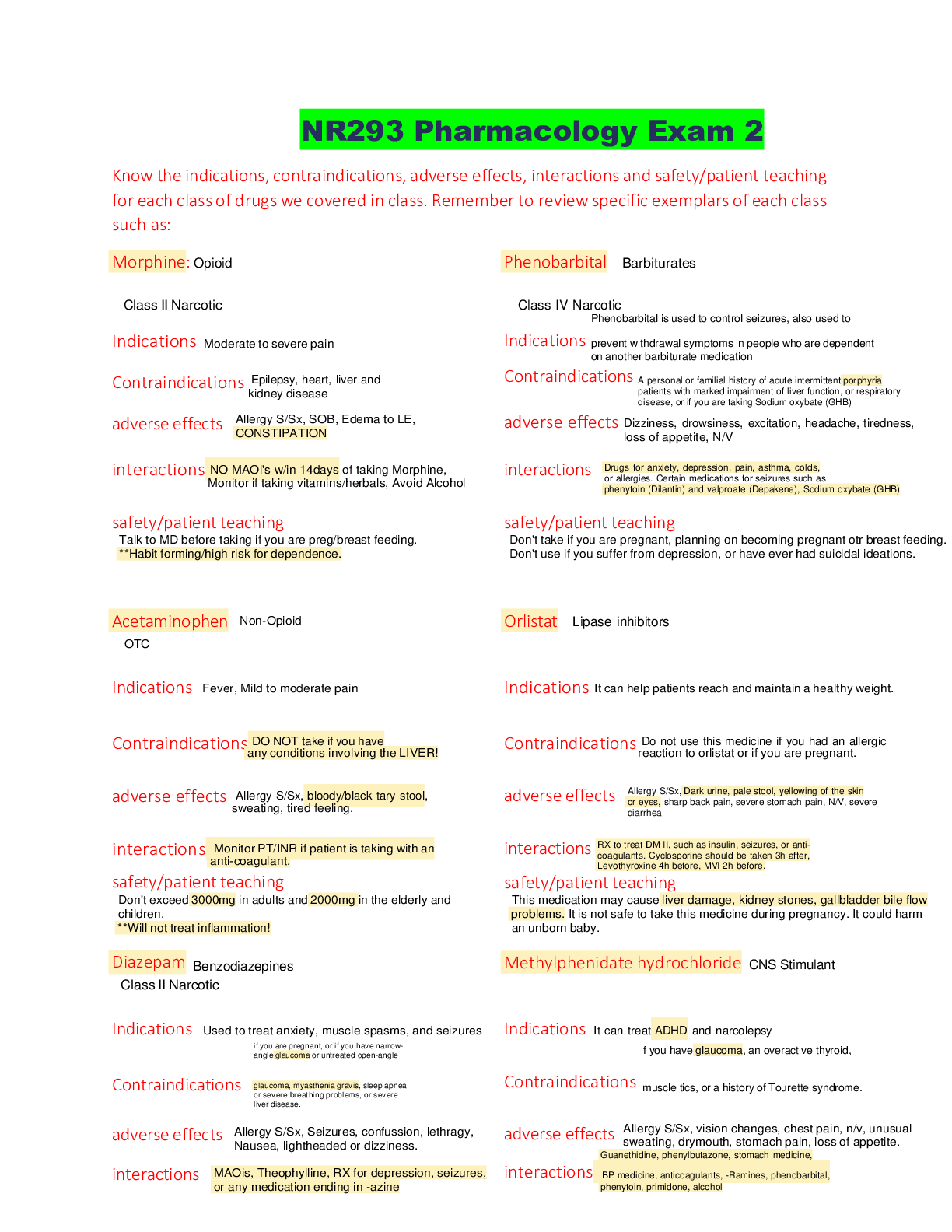
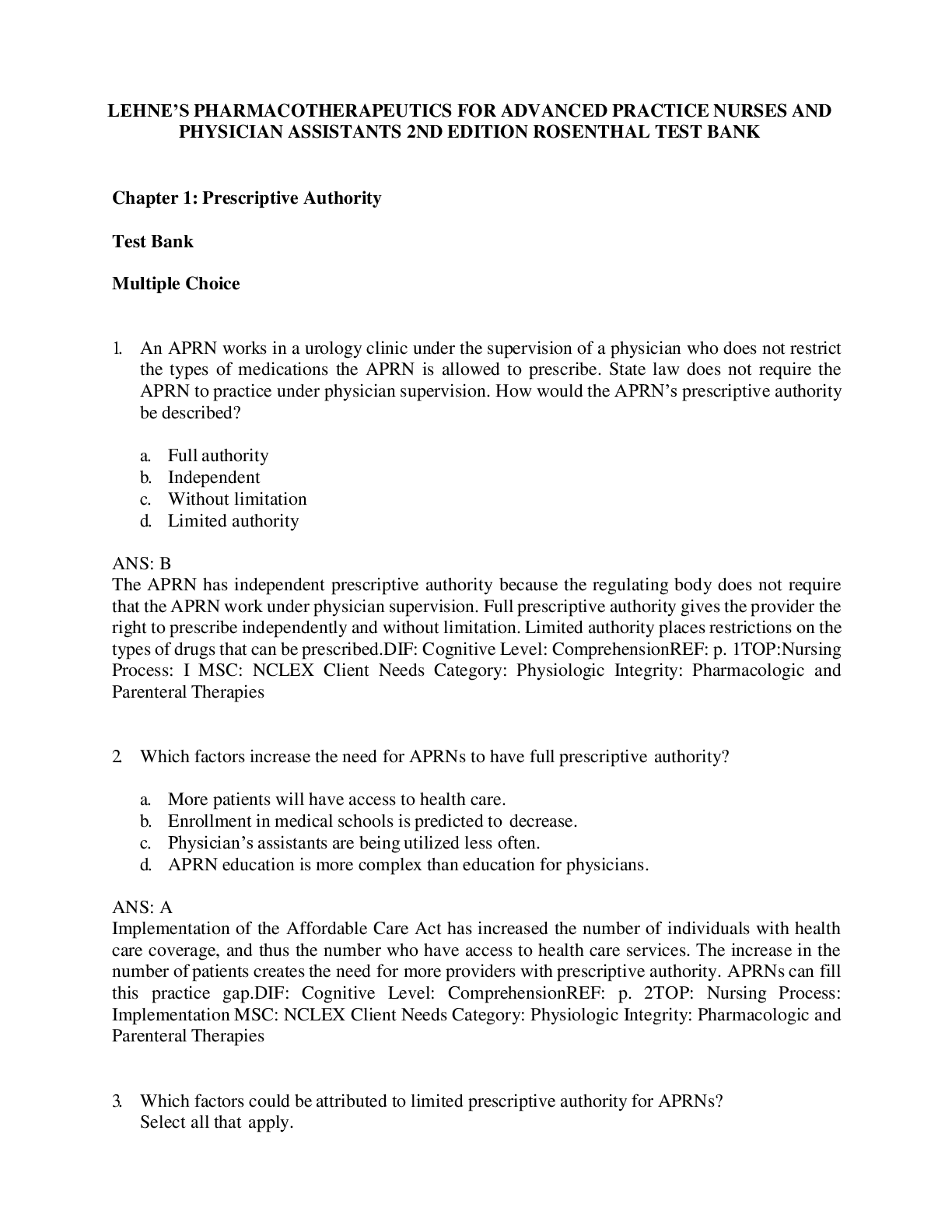



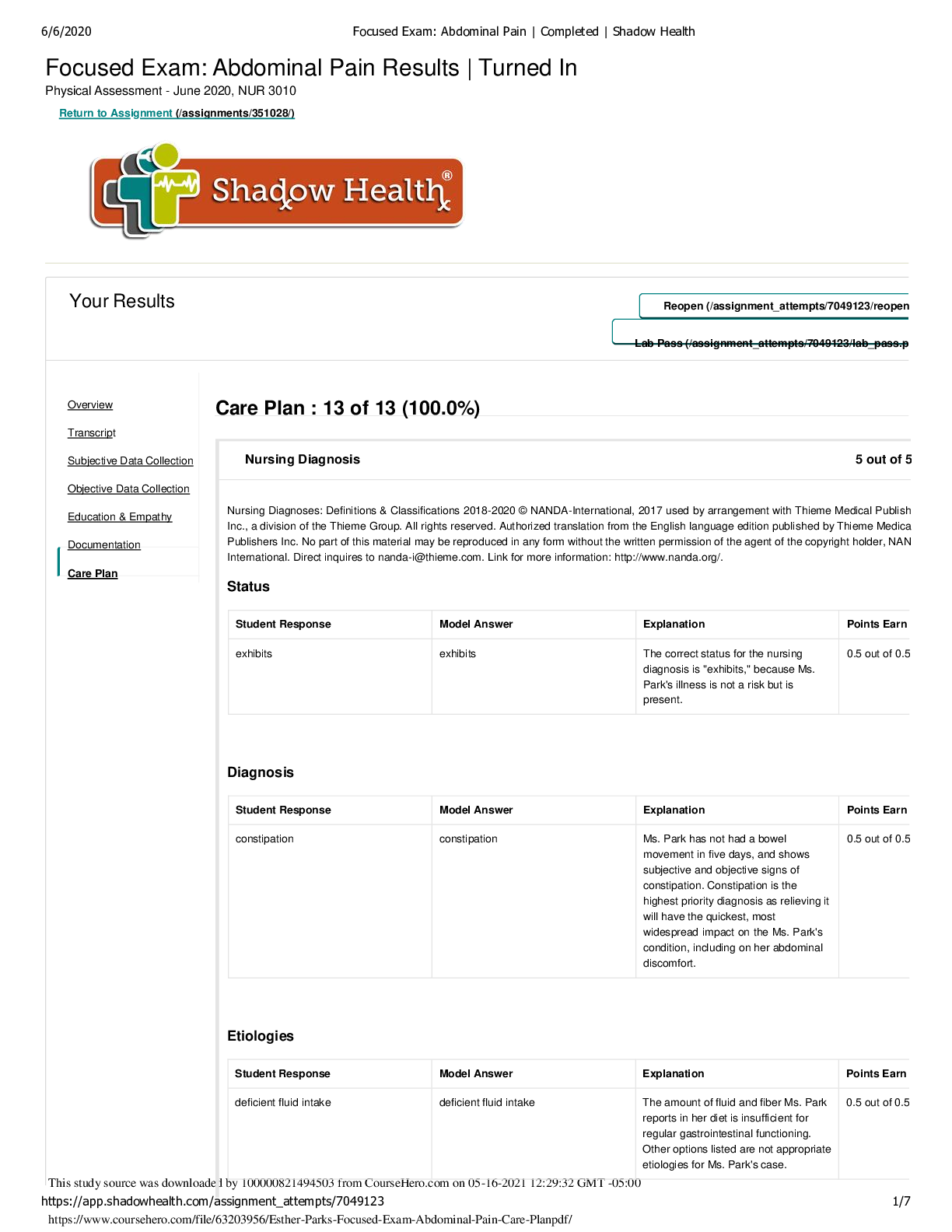

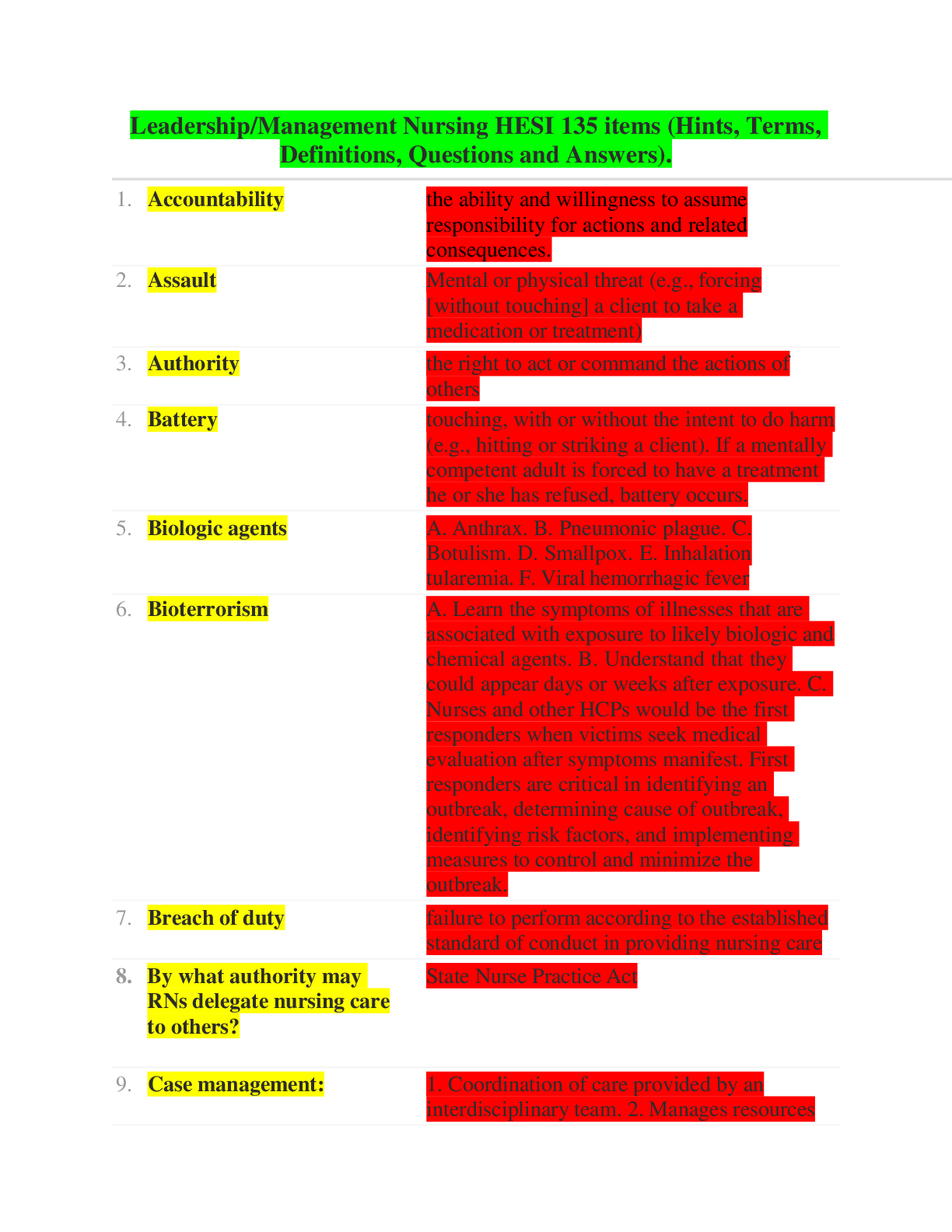
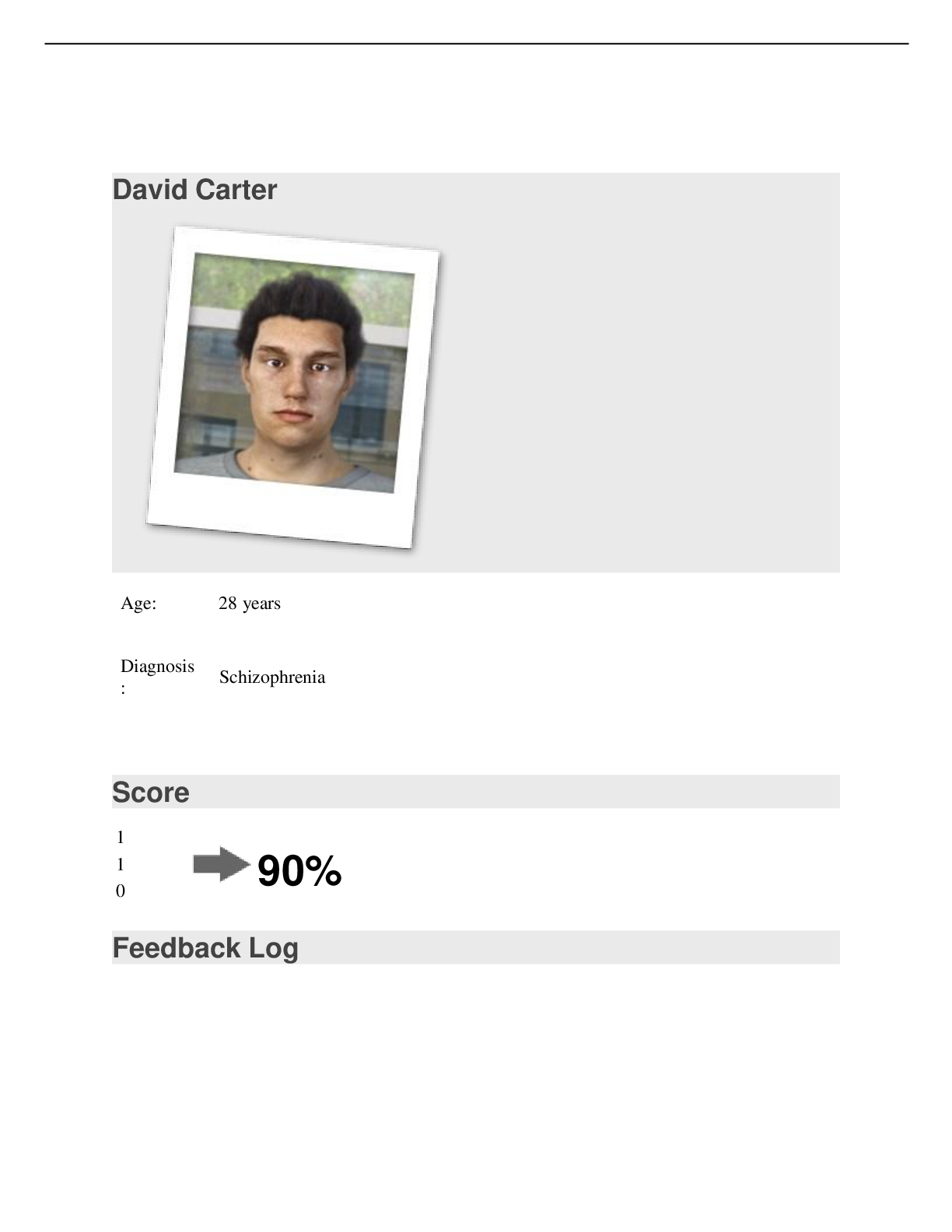
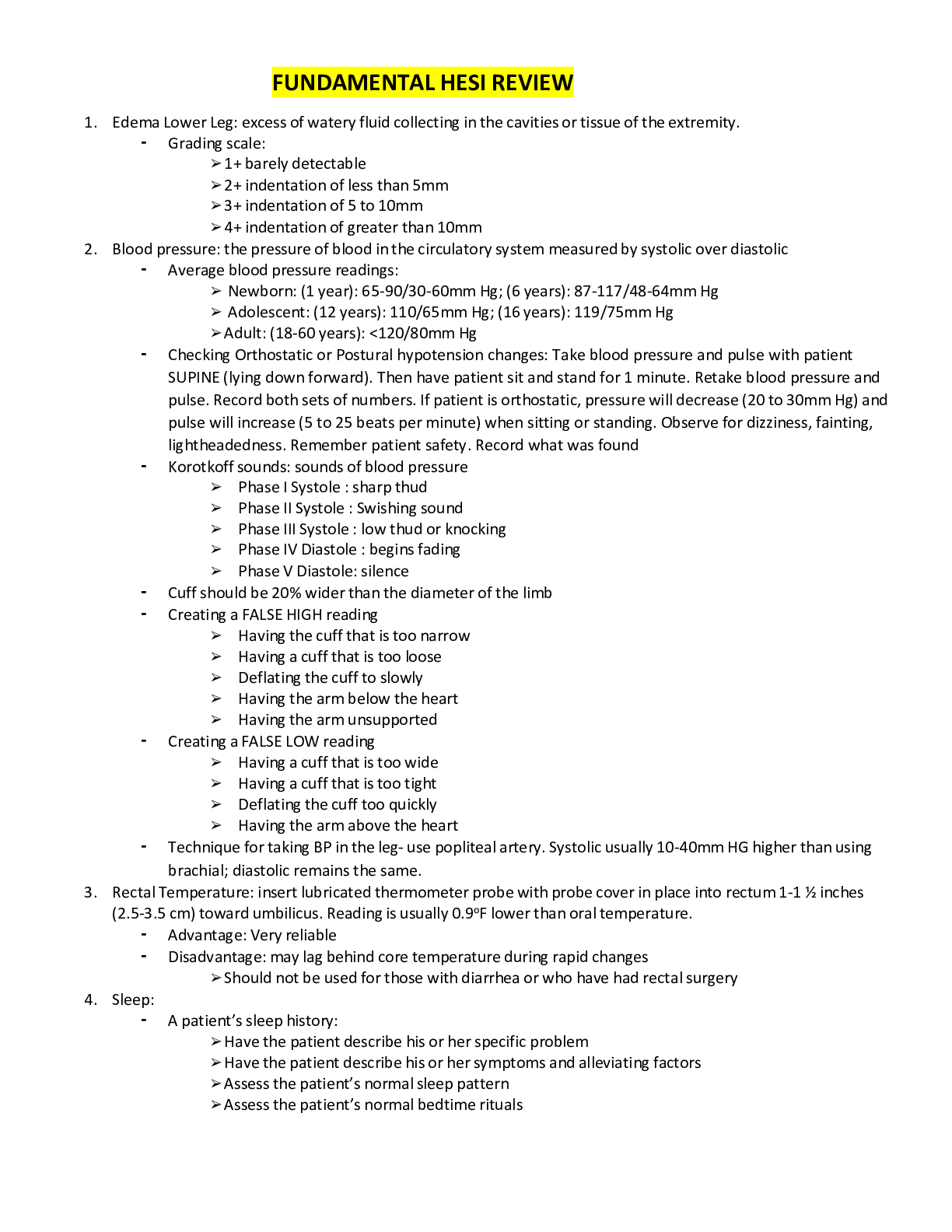
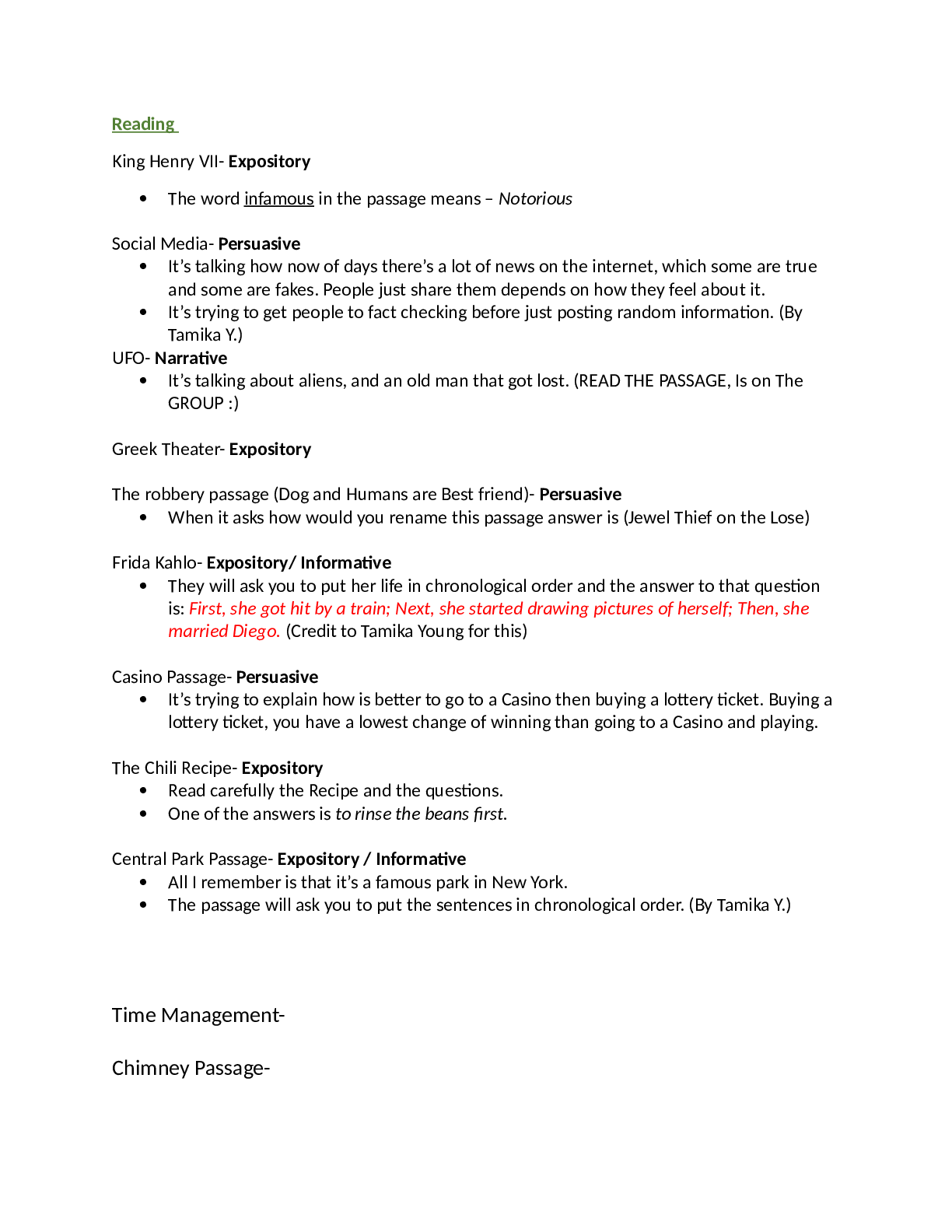


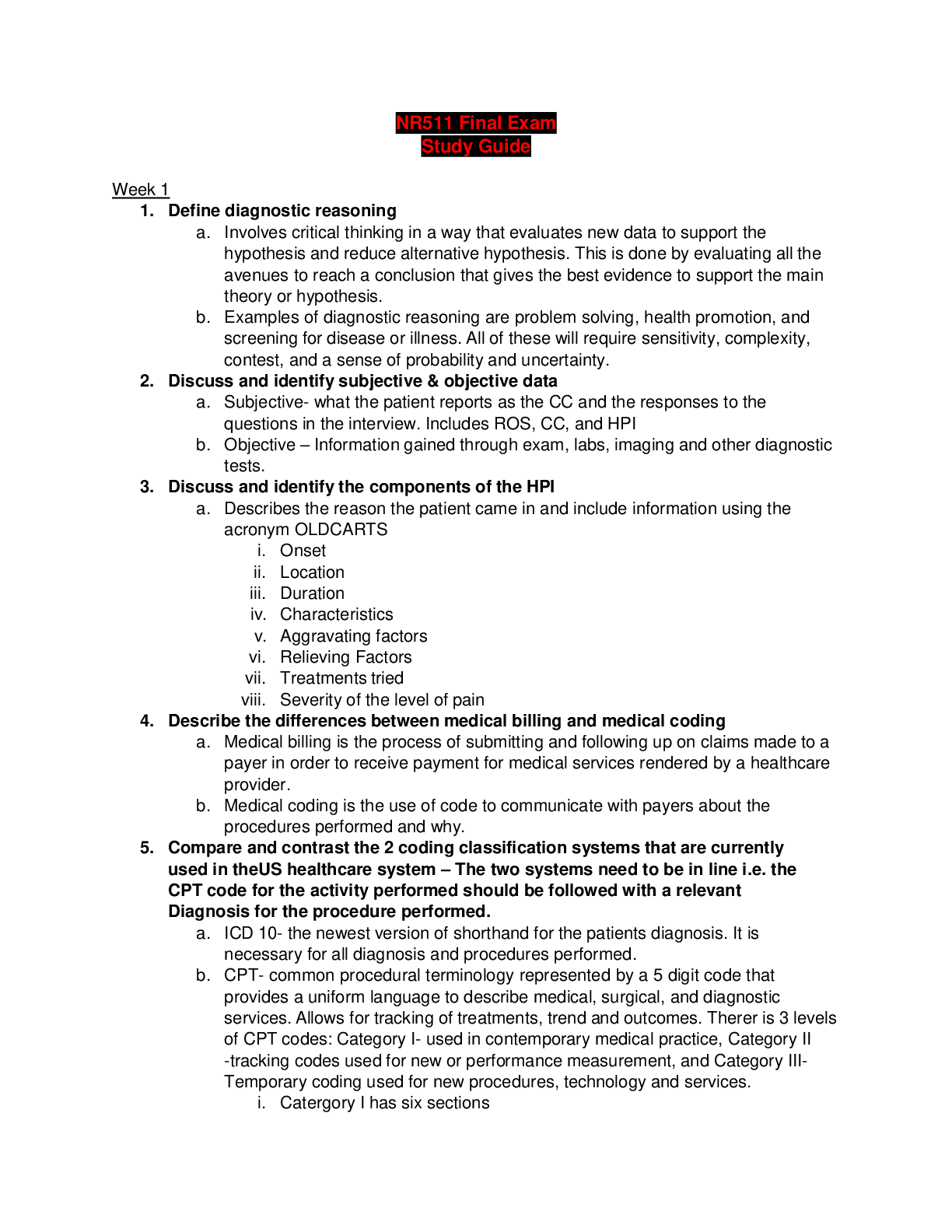


.png)
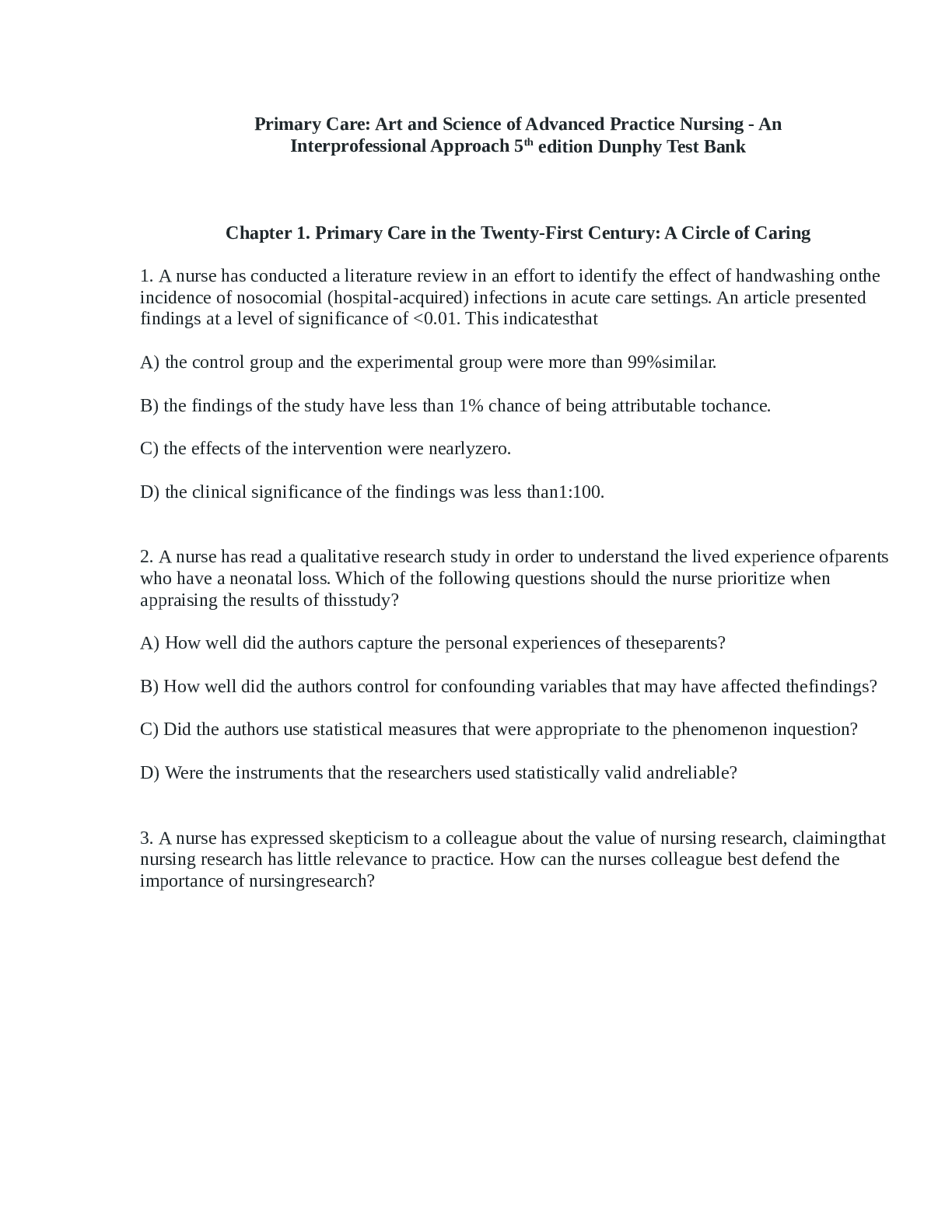
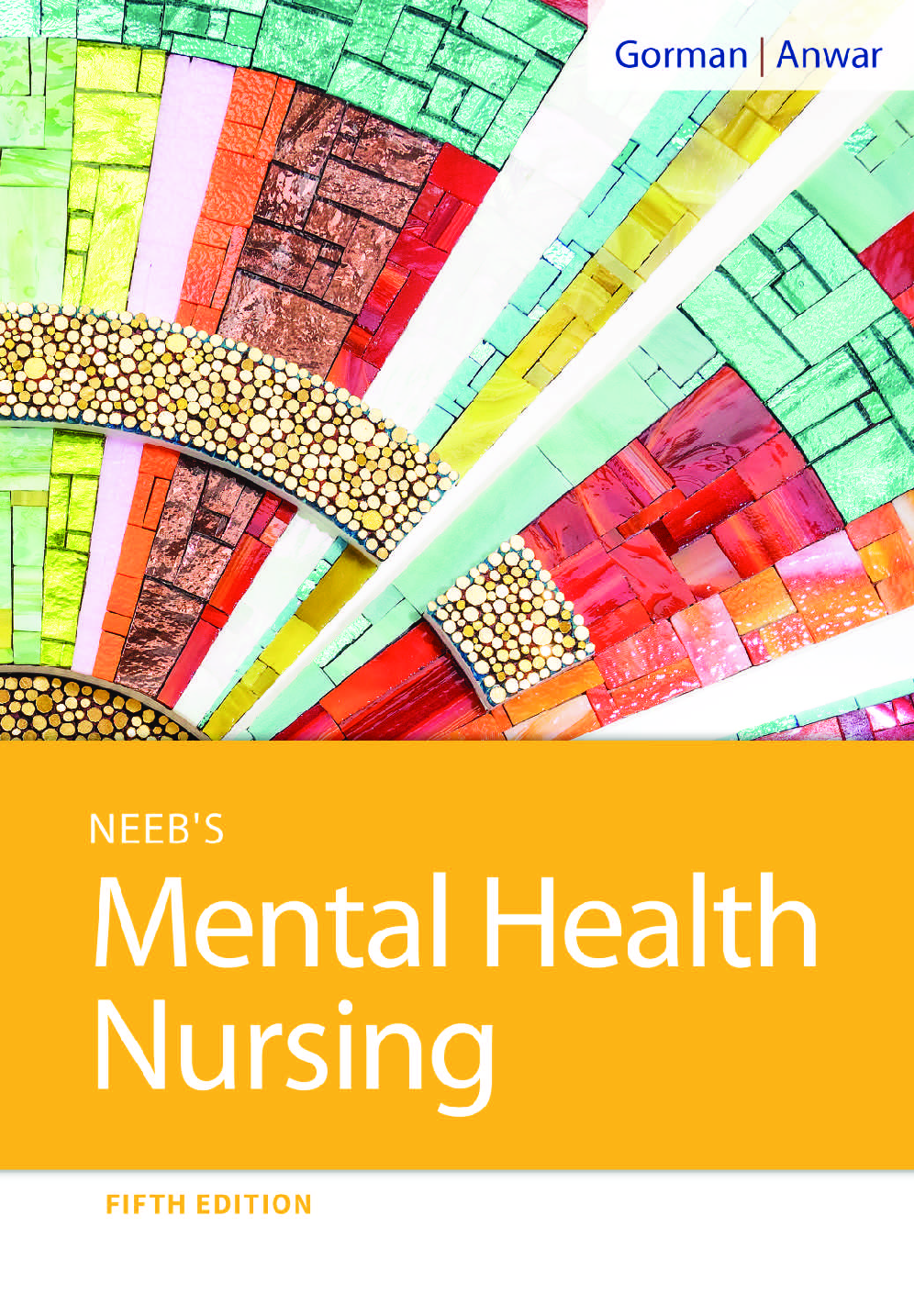








.png)

